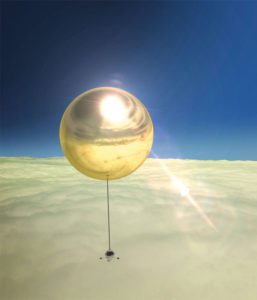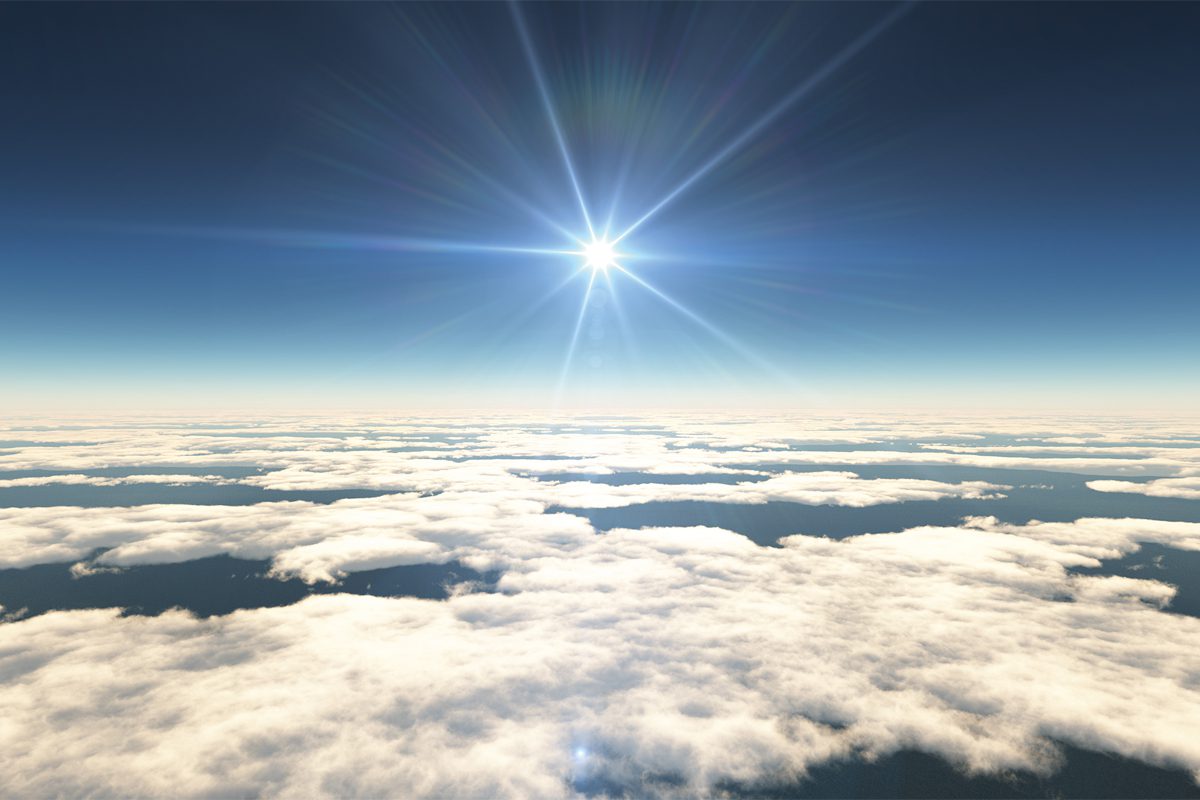The news that a US start-up has pressed ahead with experiments involving the release of aerosols in the upper atmosphere – without the consent of the wider world – has roused fears that DIY geoengineering might become a thing, and prompted an effort to update the risk calculations behind this kind of work.
Of all the proposed approaches to engineering the climate system (to compensate for the warming effects already believed to be underway), the idea of injecting aerosol particles into the stratosphere is probably the most controversial. Described as “a gigantic global experiment with the only planet we have,” as Wake Smith puts it in a 2022 book on the topic, Pandora’s Toolbox, it raises the spectre of consequences “that may surprise us”, no matter how much we work to try and predict them.
So it was with understandable disquiet that observers of the topic appeared to respond to the news that a US start-up has begun experiments of this kind in the upper atmosphere, news that first surfaced in December in an article in MIT Technology Review.
This amounted to a couple of balloon launches in Mexico in April 2022, whereby in each case a few grams of sulphur dioxide were released in the stratosphere, where these aerosol particles might assist with efforts to reflect incoming solar radiation back into space, and so help cool the planet.
With the miniscule quantities of particles involved, observers are less concerned about environmental damage in this instance than by fears that an important threshold has been crossed.
No monitoring was included in these flights, so there was also no effort made to gauge the success of the operation. What seems more likely is that the stunt is geared towards gaining publicity or catalysing debate.
It is also the first attempt so far to demonstrate commercial potential for this kind of geo-engineering, an approach many observers have warned against. The firm, Make Sunsets has been offering potential buyers $10 “cooling credits” in exchange for the release of one gram of aerosol particles in the stratosphere, which it claims offsets the warming effects of one ton of carbon for one year.
Particles and light
Solar geoengineering works on the principle that it might be possible to increase the Earth’s albedo: its capacity to reflect some of the incoming solar radiation back out into space, so it won’t have a warming effect on the climate. The planet currently has an albedo of about 30% (so 30% of the incoming radiation gets reflected back out), and this is mainly provided by clouds in the lower atmosphere and regions of snow or ice cover on the planet’s surface. If it was possible to nudge this value up by 1 or 2%, to 32%, this would be enough to offset the excess heat that is building up in the climate system, suggests Wake Smith, although this still looks like a huge undertaking. And, as climate scientist Katherine Ricke points out, in a February article in the journal Nature, we have very little evidence on how this would effect weather, agriculture, human health or other living things.
Appropriate governance seems an indispensable ingredient, although also an immense challenge, amounting to “obtaining informed consent… from the entire human race both living an unborn,” as Smith puts it.
Some of the proposed methods seem to involve engineering projects of unimaginable scale and scope (and cost!), with maybe the two most thoroughly researched so far being marine cloud brightening (most likely spraying seawater into clouds in the mid-ocean regions) and stratospheric aerosol injection, or SAI.
Both approaches “seem relatively cheap, fast acting and easy” as Ricke points out in her February article. But awareness of the risks, especially with SAI, has restricted progress and experimentation. And this being the category of geo-engineering into which Make Sunsets’ stunt appears to blunder, the apparent condemnation of other researchers seems understandable.
Smith explains that, just as there appear to be “hidden, irreversible tipping points” to climate change, there may be some with SAI itself. And after implementation begins, he says, “it may be years (or even decades) before we properly understand its impacts.”
Aerosol choices
As its name suggests, SAI involves injecting aerosols into the stratosphere, where they will remain suspended long enough to scatter some of the incoming light from the sun. Various aerosols might be suitable for this task but sulphur dioxide (SO2) has emerged as a popular choice, since it most closely mimics an effect seen in nature, whereby this gas is spewed into the upper atmosphere during especially apocalyptic volcanic eruptions. 
This kind of SAI depends on the fact that SO2 gradually transforms in the upper atmosphere into sulphuric acid, the chemical which actually performs the reflective work of the method. It has the downside of being a source of acid rain, and is also harmful to stratospheric ozone.
It also isn’t terribly good at blocking sunlight compared to other aerosols being explored – these include titanium oxide, aluminium oxide, silicon carbide, and synthetic diamond dust.
These are all better at reflecting light, but only marginally, and would be more expensive to use. Smith’s analysis holds that cost is unlikely to be a deciding factor but rather environmental risk, which again scores in favour of sulphates.
Harvard’s David Keith is one of the most well-known figures in the field, and has been working for many years on an SAI experiment – SCoPEx – which has been subject to repeated delays. In the December article in MIT Technology Review he warned against private-sector oversight of SAI, and the dangers of monetising the approach through patents or selling credits (as Make Sunsets has done), arguing that this can’t produce the level of transparency needed to make sensible decisions about deployment.
In Pandora’s Toolbox, Wake Smith presents his own “best-case scenario” as “a single rational and legitimate global monopolist deployer, operating on a not-for-profit basis” and “backed by substantial guarantees from one or more economically powerful governments”.
He proposes a complex structure of oversight, with separate governance layers overseeing the science behind it and the actual missions to release the particles in the atmosphere.
Hopes for this kind of large-scale international corporation are perhaps luxuries that belong to an earlier time.
Don’t count on cooperation
Writing in Nature in February, Katherine Ricke called for the field to better reflect geopolitical realities. Current models seem to take global cooperation as a given. Instead, provision should be made for modelling scenarios whereby efforts will be disjointed and regional. She cited a study carried out by her own group, which found that actions taken to reverse a drought in Northern Africa would cause on in East Africa.
This was one of a number of recommendations she outlined for how the geo-engineering field needs to adapt.
More real-world testing was another, in an apparent critique of the field’s almost complete reliance on computer modelling. “Problems with solar geoengineering are much more likely to emerge when theories meet physical realities.” And the geo-engineering field has some form with skirting catastrophe, or producing unexpected outcomes at least. She cited experiments in the 1990s with seeding nutrient-poor regions of the ocean with iron, in a bid to stimulate phytoplankton blooms that would suck down CO2. In the end most of this carbon was not successfully stored in the ocean, and was released.
She noted that many climate scientists believe solar geoengineering carries unacceptable risks, “but I disagree,” she said, adding that “shunning this research is riskier than studying it.”








